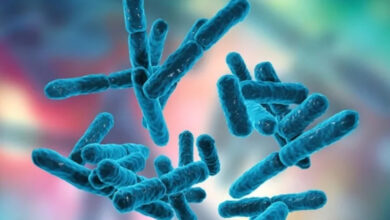THE COLOR OF FECES SAYS A LOT!

When a patient has a bowel movement that’s an unusual color, he/she gets very upset. In fact, so upset that they often place an emergency call to their doctor to report it. I remember several times when patients got very upset and called to tell me their poo had been an odd color. Yes, that’s right! Instead of the normal tan-ish, yellow brown, these folks had noticed their feces turned green, clay-colored, or black like tar. It startled them and was always mentioned with the numerous other symptoms the gastrointestinal tract is capable of causing!
Recently, Costco Connection, the information and advertisement magazine from Costco discount warehouses, had a two-page article entitled “Inside Info: What does your poo say about you?” In it, a naturopathic physician explained what is normal and abnormal and offered ways to “maintain a healthy gut.”
As a side bar to the article, the author gave a brief explanation of the causes of the six (6) abnormal colors which can occur in fecal material. It’s seems a bit strange to talk in detail about the color of one’s feces, but if you have an odd-colored BM, instead of being upset, you’ll be equipped with the knowledge to know what to do and who to call.
Any deviation from the normal in color, consistency, shape, and odor of our feces may mean changes are going on within our bodies and points us to a certain organ system as the source of the problem. Color is one of those indicators.
What is going on, and what does it mean when the feces is….?
BLACK: This is the most worrisome of all colors. If the feces is black, dark red, and like tar, it is most often caused by bleeding in the upper GI tract (esophagus, stomach, duodenum). When blood gets into the GI tract, hydrochloric acid (HCl) in the stomach turns it from bright red blood to dark red or black and makes it sticky like tar. As the blood passes through the small and large intestines, it further darkens. Having black, tarry stool can result in severe blood loss anemia and shock, and should be considered a medical emergency.
WHITE: This is called acholic stool and means there is no bile in the feces. It occurs when there are problems with the gall bladder, liver, or pancreas. In normal situations, bile, which digests fats, turns the stool a dark yellow-brown color. When bile is prevented from getting to the GI tract, the feces remains a white or clay color.
GREEN: Overproduction of bile can cause green feces. Also, eating “green plants” and chlorophyll supplements will also cause green stool. Green mucousy stools occurs in sick children and adults whose food intake has been greatly reduced. These are called starvation stools.
RED: Beets cause red stools. Lower GI bleeding from the colon or rectum is a major cause and should alert the patient to seek medical care. Blood mixed with mucus, or a gelatin-like substance, may be a sign of colon cancer. It’s called currant jelly stool. Regardless, red, blood-like feces needs prompt medical attention.
ORANGE: Beta-carotene is an orange pigment found in carrots, sweet potatoes, and other orange-colored foods. It will turn feces orange and if eaten in adequate amounts, even turn the skin a yellow-orange color. This is a totally benign condition that has no serious health consequences.
YELLOW: This may indicate there is too much fat in the feces, especially if it has an oily consistency. A yellow color occurs when bile production is decreased or in conditions of the GI tract where food is not absorbed properly (called malabsorption or Celiac disease).
A change in the color of one’s feces is significant in many cases. Often, what we eat determines everything about our digestive function, and if one part of the digestive tract is not working right, we have problems. To prevent these organ malfunctions, proper eating and avoidance of irritants are very important. A diet rich in protein and fiber, especially vegetables (which so many people dislike) keeps the gut lining strong and healthy, promotes regular bowel movements, and maintains the proper balance of gut bacteria.
Conversely, we all put things in our GI tracts that have negative effects. Non-steroidal anti-inflammatory drugs do major damage to the gut lining. Laxatives and other “supplements” lead to bacterial imbalance and dependence. Certain spicy foods, caffeine, alcohol, and artificial sweeteners cause bloating, gas, abdominal pain, and diarrhea, and avoidance is the best treatment.
Keeping stress at a controlled level plus proper dietary intake and exercise will keep things in balance and functioning as they should.
Reference: Greathouse R. Inside Info: What does your poo say about you? Costco Connection 2023 Sep:54-55.




